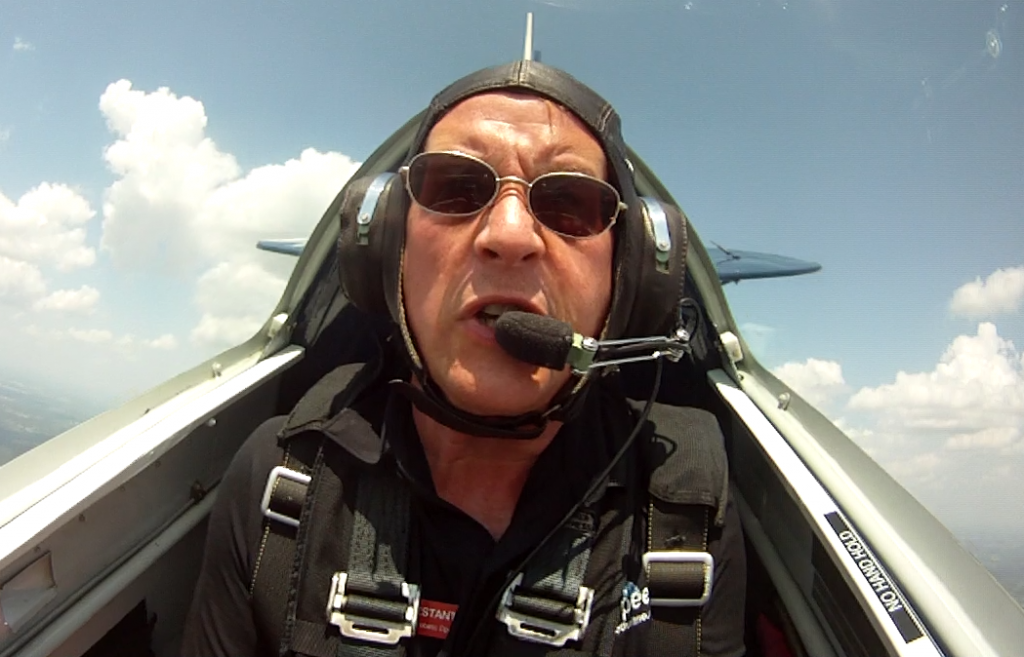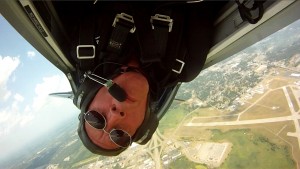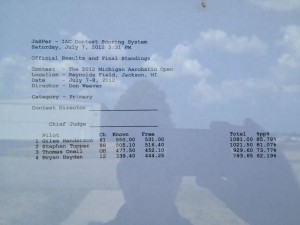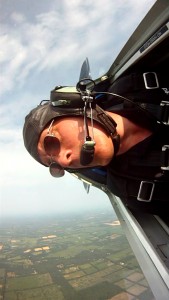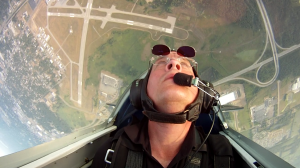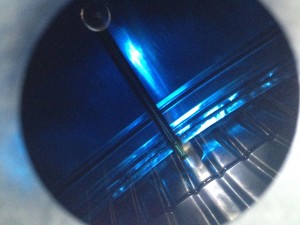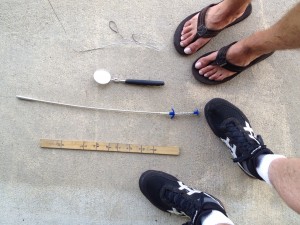The first day of competition here at the Michigan Aerobatic Open is complete. I’m in second place after two flights and pretty happy about it.
I think that I weathered the disappointment of having to drop down from Sportsman to Primary pretty well. And, considering that I got up and ran the routine only four times in the box yesterday, I’m pretty happy with today’s performance.
In fact, I’m pretty sure that it helped a lot to fly something simpler this time out. The payoff is that I’m a LOT more situationally aware in the box. I’ll be perfectly honest: Last year, I pretty much waved into the box and just did the sequence without paying much attention to the ground and hoped that the sequence would keep itself in the box.
Not so this year. This year I’ve developed some much improved situational awareness (“SA”). I found the box all by myself. (Go ahead. Laugh. It ain’t easy. It’s tiny. The markings don’t jump out at you. It’s not aligned with anything other than Runway 6/24. And there are lots of other ground features that beg you to fly them.) I entered the box in the upwind third. I stayed in the box. Mostly.
There’s nothing quite like coming around on the back side of the loop and seeing that you’re diving right for the box center marker on the numbers of Runway 14. There’s a real satisfaction in knowing that you’re planning a maneuver or two ahead. That you’re a responsible competitor under his own navigation. It’s pretty good stuff.
I’m also getting a good spin entry up there. Last year, I’d get to the top of the 45 up and leave the power in through level. Then I’d wallow
So what am I goofing up? Oddly enough, it’s mostly stuff that I know how to fix. I’m shallow or steep on the Cubans. I pinched the loop a couple of times. All of this is stuff that I know how to fix. The slow roll continues to evade me, but I’m going to try forcing myself to wait to push so i don’t drag the aircraft off track. The only thing that I really don’t have a game plan to fix is the spin. I’m consistently negative in the recovery. I’m sure that some more optimal combination of stick and rudder would work, but I’m coming out on heading even if I am throwing myself into the straps by pushing the nose down. And coming out on heading is critical to the remainder of the sequence. So I’m just planning to stress the straps again tomorrow and work on rounding out the loops and nailing the Cuban downlines.
I’m likely out of the hunt for first. Giles is just too far ahead. And he’s flying very well. But I’m flying very consistently and I’ve poked into the 80% range. There’s no good reason that I couldn’t score in the 530s or 540s tomorrow. I know what I have to do.
And, besides, as always, I came here to satisfy just one guy. And that’s me. Yeah!
